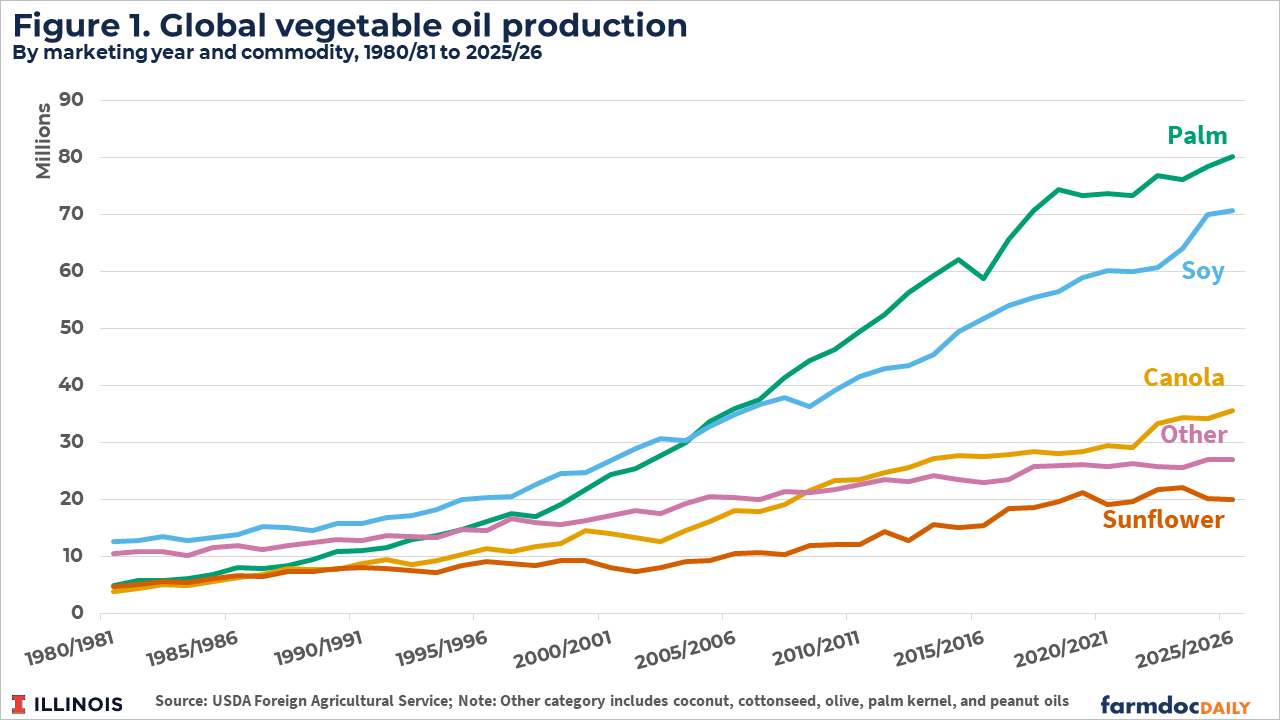Unleashing a New Weapon on the Mosquito: A Mosquito
In a lab in Colombia scientists have found success with infecting mosquitos with Wolbachia. Wolbachia is a parasitic bacteria that lives in a lot of types of insects, and when mosquitos are infected with it they aren't able to spread dengue fever. This has major implications in stopping the spread of disease in many countries where dengue runs rampant. Labs in Colombia have successfully infected and bred mosquitos and then released the infected mosquitos into the environment where they spread the bacteria to native mosquitos. The program is just starting, but the goal is to infect all of the mosquitos in a village or city to stop the spread of disease altogether.

In a laboratory in downtown Medellín, Colombia, it is lunchtime: A technician in a white coat carries a loaded tray into a steamy nursery. She walks between rows of white mesh cages, each the size of a mini-fridge, and slides a thin tray of blood into every one. In response, her charges, all 100,000 of them, begin to whir and emit an excited hum.
This is a mosquito factory. Each week it churns out more than 30 million adult Aedes aegypti mosquitoes, with their distinctive white polka dots on their wiry black legs. The brood stock of females is fed on discarded blood bank donations, and horse blood. Eventually, some of their progeny will be released into Medellín, Cali and cities and towns in Colombia’s verdant river valleys. Other insects will be chilled into a stupor for a journey up to Honduras.
The elaborate effort is part of an experiment that is making encouraging progress in the long fight against mosquito-borne disease.
Aedes aegypti spreads arboviruses, including dengue and yellow fever, which can severely sicken or kill people. But these are special Aedes aegyptis: They carry a type of bacteria that can neutralize those deadly viruses.
Five decades ago, entomologists confronting the many kinds of suffering that mosquitoes inflict on humans began to consider a new idea: What if, instead of killing the mosquitoes (a losing proposition in most places), you could disarm them? Even if you couldn’t keep them from biting people, what if you could block them from passing on disease? What if, in fact, you could use one infectious microbe to stop another?
These scientists began to consider a parasitic bacteria called Wolbachia, which lives quietly in all kinds of insect species. A female mosquito with Wolbachia passes it on in her eggs to all of her offspring, who eventually pass it on to the next generation.
But Wolbachia isn’t naturally found in the mosquito species that cause humans the most problems — the Aedes aegypti, the virus carrier, and the Anopheles subspecies, which carry malaria. If it were, it might eventually render those species essentially harmless.
So how do you infect a mosquito with Wolbachia?
Researchers found, after painstaking trial and error, that they could insert the bacteria into mosquito eggs using minute needles. The mosquitoes that grew from those eggs were infected.
How mosquito eggs are injected with Wolbachia
Injection needle
MICROSCOPE SLIDE
½ millimeter
The Aedes aegypti mosquitoes that hatched and lived with Wolbachia did just fine. And as hoped, the Wolbachia mostly blocked the viruses: The mosquito who bit someone with dengue, and picked up the virus, didn’t pass it on to the next person it bit.
That got the researchers thinking: If they could infect all the mosquitoes in a village or city, they might stop the disease. Unlike truckloads of insecticides, sprayed down every street and running off into water systems, this method would not harm the ecosystem.
But how do you get Wolbachia into all the mosquitoes in a city the size of Medellín?
How Wolbachia spreads among wild mosquitoes

Source: World Mosquito Program Eleanor Lutz
Once they were confident they could infect generations of mosquitoes in the lab, the scientists needed to know if their theory would work in the wild. The method was first tested in small towns in northern Australia, where females with Wolbachia released in the field mated with wild males and did, indeed, spread Wolbachia through the mosquito population.
A team led by an Australian entomologist named Scott O’Neill next tried some towns in Vietnam, and then a small city in Indonesia. There, after three years, areas where Wolbachia had been released had 77 percent fewer cases of dengue reported, and 86 percent fewer hospitalizations.
Those results were stunning — a delight for a population used to miserable dengue seasons, and a huge relief for the public health system. Dengue causes intense suffering in even “mild” cases — it’s commonly called “breakbone fever” — and 5 percent of cases progress to the hemorrhagic form of the disease, with uncontrolled bleeding. Half of the people who develop hemorrhagic dengue die if they do not have access to treatment to control the bleeding. There are no antiviral drugs to kill the dengue virus, and the search for a safe and effective vaccine has been long and fraught.
Dengue already sickens 400 million people around the world each year, and kills 20,000, and it’s spreading fast. In places such as Indonesia, where the virus is endemic, every outbreak season, dengue overwhelms hospitals the way Covid-19 did in different places during the height of the pandemic.
Because of climate change, aegypti is broadening its range, bringing dengue with it: France had its first endemic dengue outbreak last year. The virus is in Florida and Texas. The worst dengue outbreak ever recorded was last year in Brazil — 2.3 million cases and nearly 1,000 deaths.
The countries and territories reporting dengue as of 2018

Mosquitoes are increasingly resistant to insecticides. But the Wolbachia trial results in Indonesia suggested that if the Wolbachia-carrying mosquitoes supplanted the local population, then the bacteria might be established for good — and no further mosquito control would be needed.
From Indonesia, Dr. O’Neill’s group took their testing to Brazil. Another group, called WolBloc and run by the University of Glasgow entomologist Steven Sinkins and his colleagues, began a trial in a neighborhood of Kuala Lumpur, the capital of Malaysia, using a different strain of Wolbachia.
And Medellín, population three million, is the biggest test to date.

For a mosquito showdown in a city this size, you need a lot of mosquitoes. Millions and millions of them.
Dr. O’Neill’s group — now calling themselves the World Mosquito Program — set up the production process. It’s tricky work, creating the conditions to maximize mosquito reproduction.
In the factory, females feast from the blood trays at the top of the cages, then fly down to the bottom where they lay eggs on filter paper placed in little cups of water. Technicians pluck out the paper, speckled with hundreds of tiny eggs. Some of those eggs are placed in large tubs of nutrient-enriched water, and after nine or 10 days they hatch into squirming larvae that resemble tiny worms.
From there they become pupae. Hours before they are due to transition to adulthood, they are poured through a strainer that sorts them by sex (females are bigger) and moved into mesh cages.
Some females are kept to breed — like battery hens — but hundreds of thousands of the adults are boxed up to be sent out into the world. They are released into neighborhoods by program staff members on foot or riding on the backs of motorbikes. In the city of Cali, researchers are using a large blue drone that spits out 150 mosquitoes every 50 meters, skimming over rooftops and between high-rises.
The other group of eggs are packaged into capsules that are only a bit bigger than a vitamin, along with the nutrients they need to mature. These are given out to people in the community, who can drop them in a cup of water and grow dengue-proof mosquitoes on their patios.
The World Mosquito Program released two million Wolbachia-infected mosquitoes over three months in its first target area in Medellín.
Then researchers waited: would they successfully mate with locals? And pass on Wolbachia to their progeny?
After four weeks of releases, the program began to collect mosquitoes in traps through the neighborhood to check. Back in the lab, they ground the insects up and tested for the presence of Wolbachia RNA. Over the ensuing months, more and more of the samples had it.

Eventually, the program found Wolbachia in about two-thirds of the mosquitoes — enough that it could consider the bacteria established in the trial neighborhood — so staff members fanned out over the entire city, gradually blanketing it in Wolbachia mosquitoes.
A few years ago the project expanded to Cali, where the rates of dengue and chikungunya were surging. In the neighborhood of Siloé, which climbs over a hill above the city, Marlon Victoria, 33, had a case of chikungunya in 2018. He was feverish and aching, unable to get out of bed. “I couldn’t work for two months, and that had a big effect on our family economically,” he said.

So when the researchers came looking for help, Mr. Victoria signed up. He hung boxes of mosquito eggs in the trees, and he reassured skeptics that this would help with the dengue cases that were sending their kids to the hospital. “We explained to people that we were going to be bringing more mosquitoes, but good ones,” he said.
Did it work? It’s a tricky thing, measuring dengue rates: Outbreaks of the disease typically arrive in cycles of four, five or six years, and the Covid pandemic — during which people stayed away from public transportation, markets and schools, all major transmission sites — also complicates the numbers.
But Colombia’s national dengue monitoring system recorded the lowest dengue rates in Medellín in more than two decades in 2021 — which should have been a peak dengue year.
Dengue infections in Medellín
Enthusiasts such as Dr. O’Neill say the experience of Colombia, combined with that of Indonesia, should be all the evidence it takes to show that Wolbachia mosquitoes should be released everywhere that has an arbovirus problem. But that is no small proposition.
It’s not cheap to mass produce mosquitoes, and disperse them all over a city or a country. The Colombian program has a bustling technical operation and a vast staff. It took seven years for the mosquito factory there to be able to produce over a million insects a week. Personnel is the main cost; automatization, like using the drone to manage the releases that Mr. Victoria did by hand, helps streamline the process.
The World Mosquito Program estimates it has cost $2 to $3 per person to implement Wolbachia in Medellín. Outside estimates put the cost of a mosquito-control-through-release program at closer to $15 per person. But the program says the project will pay for itself in seven years, in reduced health care costs, in reduced spending on insecticide spraying and other control methods and in regained wages.

Will it work everywhere? That’s not clear. The World Mosquito Program mosquitoes didn’t establish themselves in some areas in which they were released in Vietnam; Dr. O’Neill says they don’t know why. It’s also taken longer to establish the insects in different parts of Medellín than in others. The Wolbachia strain being used in Malaysia seems to do better at higher temperatures and could be better suited for some countries.
Laura Harrington, a professor of entomology at Cornell University who is an expert on mosquito mating (What goes into a successful mosquito hookup?), says her decades of research have found that lab-reared mosquitoes don’t compete as well against wild ones for mates, in any climate zone. “They’re not as sexy,” she says. So while the potential for Wolbachia is exciting, it’s much too soon to put a price tag or a timeline on using it for dengue control, she said, because it’s unclear how many mosquitoes a city program would actually need to release.
Then there is the matter of the evolutionary battle underway inside every infected mosquito: The arboviruses need to spread to survive, so they’re trying to find a way to overcome the ability of Wolbachia to disarm them. Likely, they eventually will, Dr. O’Neill said, but he predicts it won’t be soon.
“It might happen on an evolutionary timescale, maybe decades, maybe more like 10,000 years,” he said. “But I’d be content with a few decades, to allow other technologies to develop, until we have a better tool set.”
If the arboviruses move into other mosquito species, that’s a separate problem. But Wolbachia could move into other species, too: The WolBloc team has had some early success in preventing malaria transmission by mosquitoes infected with Wolbachia. That holds enormous promise for countries such as those in West Africa that have heavy burdens of both arboviruses and malaria.
In Medellin, mosquitoes have shifted from menace to irritant. “You don’t hear people talk much about dengue these days,” Mr. Victoria said. “If people can just forget about it — that would be a tremendous thing.”
By Stephanie Nolen and Eleanor Lutz.
What is Your Reaction?
 Like
1
Like
1
 Dislike
0
Dislike
0
 Love
0
Love
0
 Funny
0
Funny
0
 Angry
0
Angry
0
 Sad
0
Sad
0
 Wow
0
Wow
0























































/environment-climate-change-and-health-(ech)/water-sanitation-hygiene-and-health-(wsh)/landfill-tuvalu-36092.tmb-1200v.jpg?sfvrsn=5c21fe40_1#)











:focal(1500,1000)/https://media.globalcitizen.org/a6/9a/a69a4720-d8a1-4715-b596-18738d03c05c/rotary_polio_hero_image.jpg?#)










